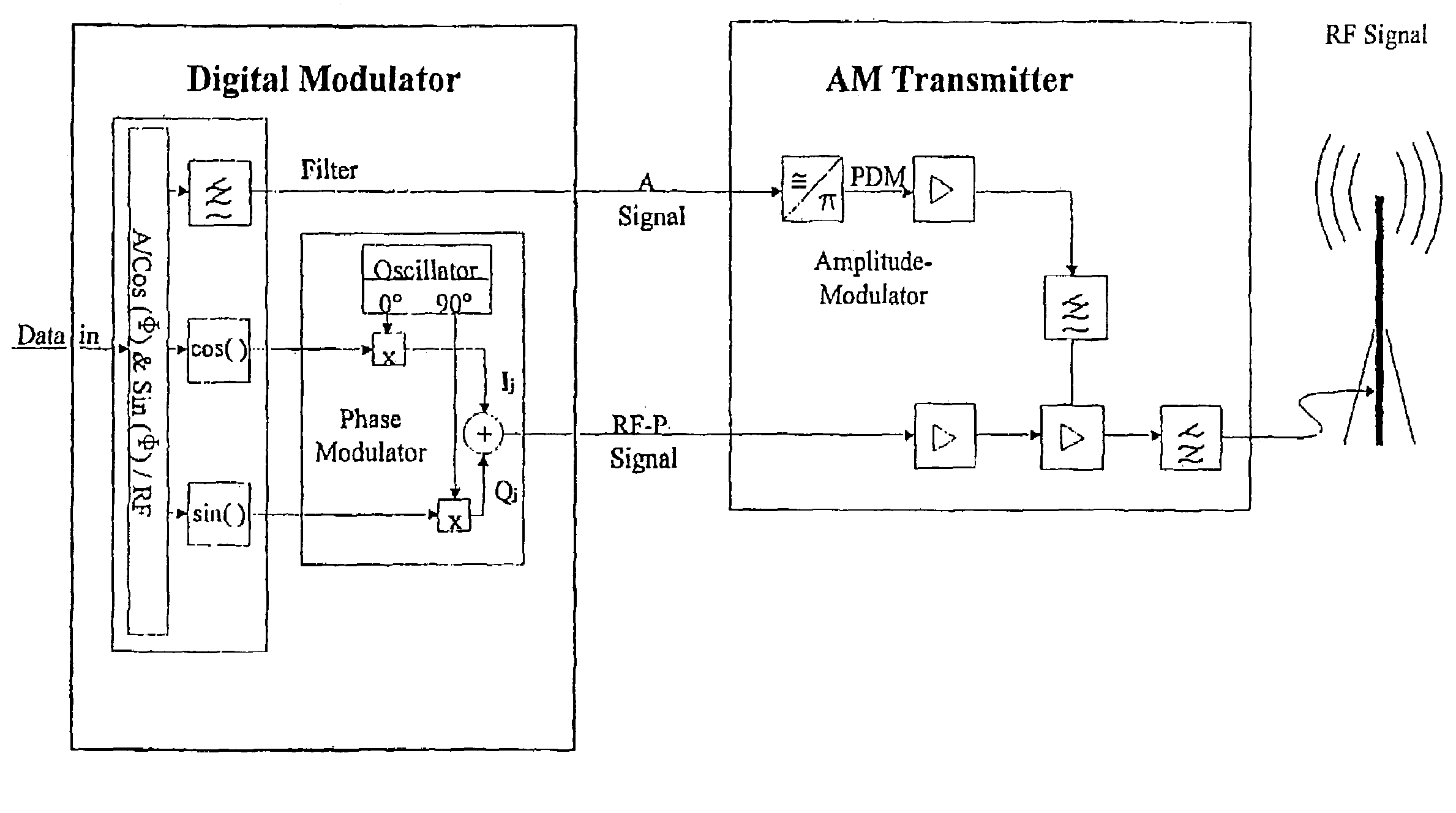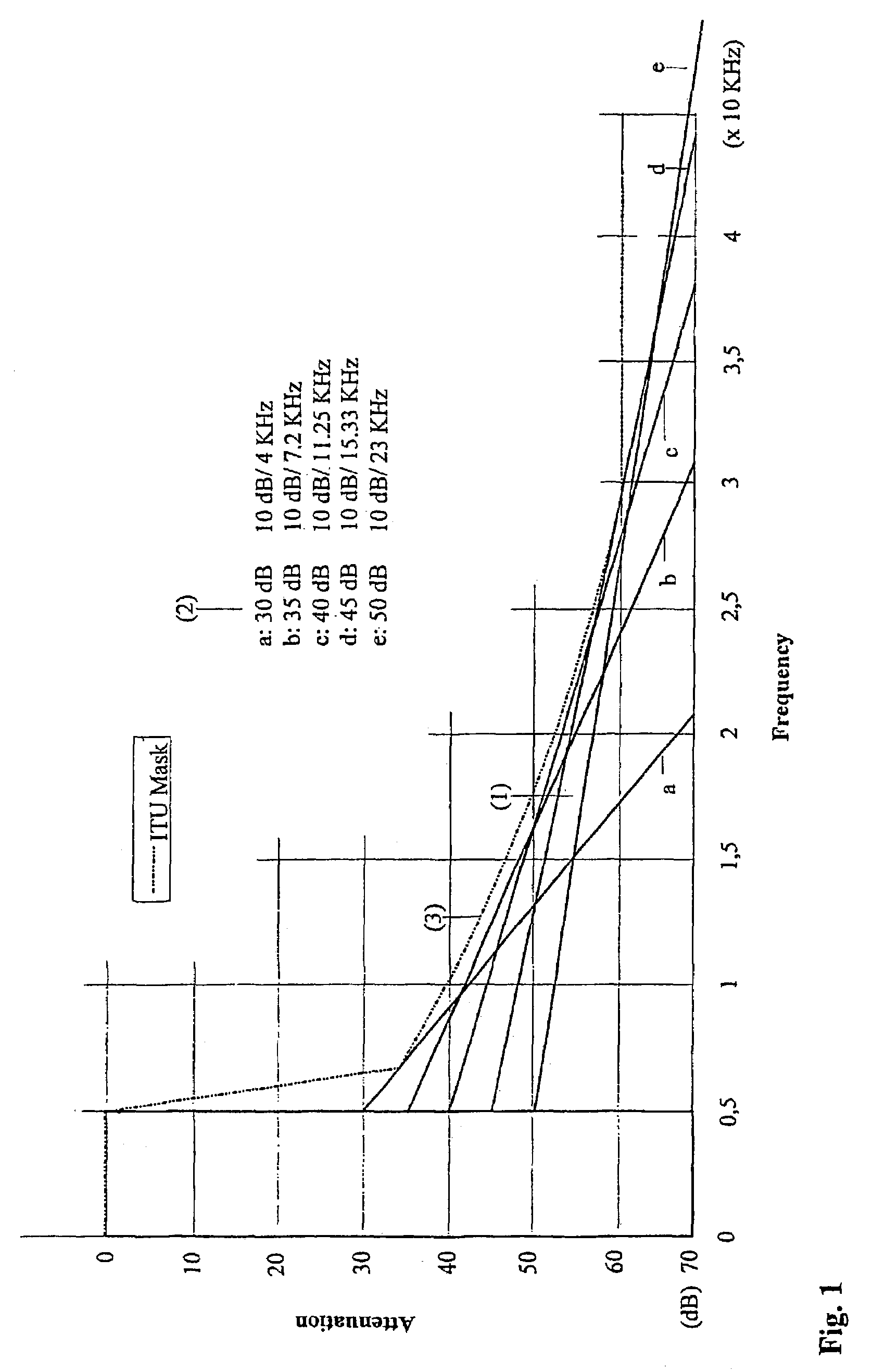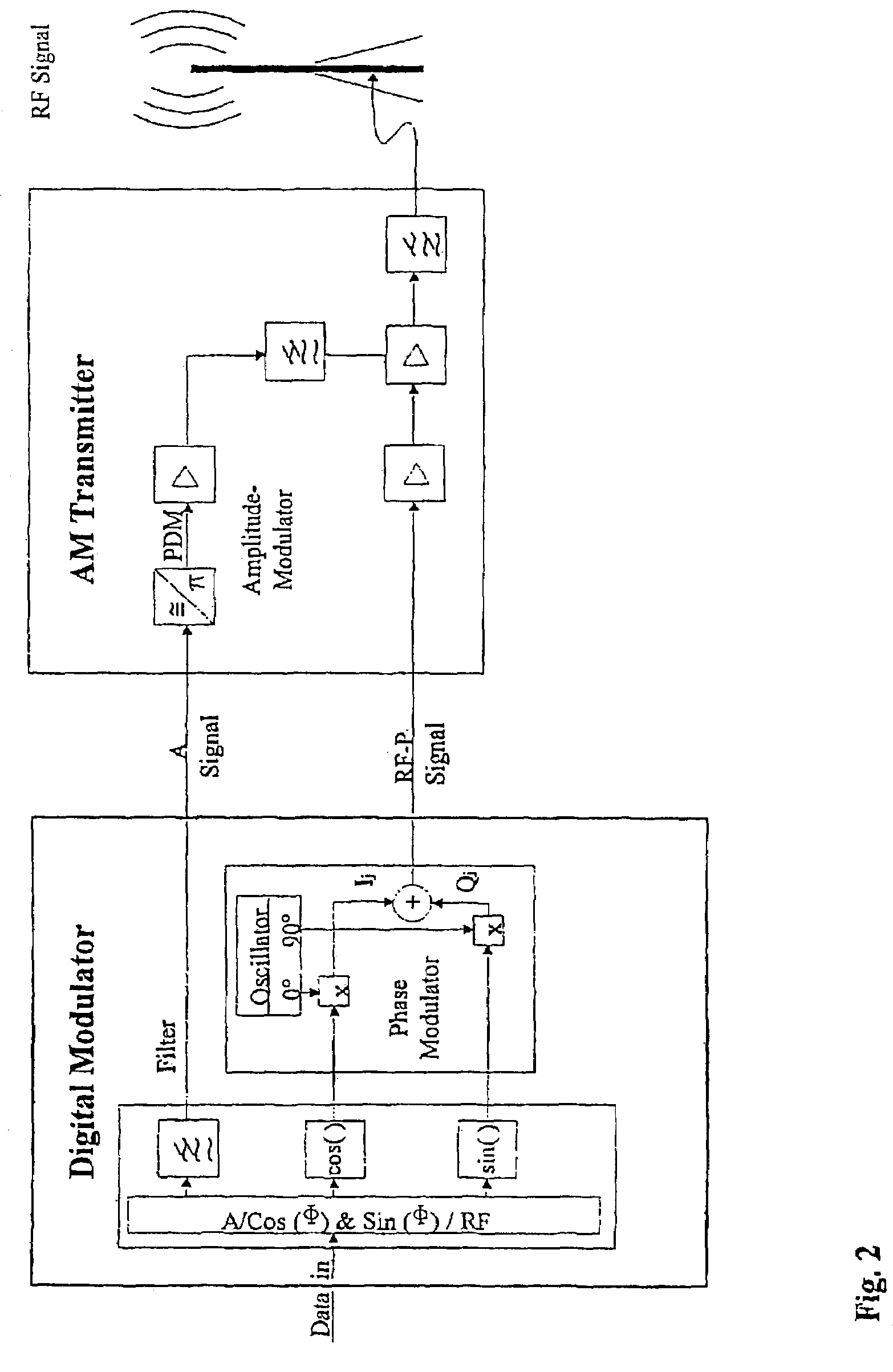Method for reducing the out-of-band emission in AM transmitters for digital transmission
a technology of am transmitters and digital transmission, applied in the field of am (amplitude modulation) broadcast transmitters, can solve the problems of unwanted emissions and different output signals, and achieve the effect of reducing unwanted emissions and reducing out-of-band emissions
- Summary
- Abstract
- Description
- Claims
- Application Information
AI Technical Summary
Benefits of technology
Problems solved by technology
Method used
Image
Examples
example 1
Modification of an OFDM Signal
[0044]OFDM signals have a fairly rectangular spectrum but feature a noise-like character in the time domain, namely both for the 1-component and for the Q-component of the time signal. This is a result of the occurrence of the interference of many subchannels which are independent of each other.
[0045]If, in the case of OFDM signal, a certain degradation is accepted, that is, a slight increase of the bit error rate for a given signal-to-noise ratio, then it is possible to “bore a hole” in the vector diagram.
[0046]To this end, it is required to modify the I(t) and Q(t) components of the OFDM baseband signals. Only after this can the I / Q A / RF-P conversion and the transposition to the transmitter frequency be carried out.
[0047]The I(t) and Q(t) baseband signals are AC voltages and therefore each of them has zero crossings. The critical case, in which the 0 / 0 point is approximated or touched in the vector diagram, occurs when I(t) and Q(t) both have a zero c...
example 2
Modification of a BPSK Test Sequence
[0058]To measure the radio channel and also to synchronize the receiver, it is possible to use a BPSK (Binary Phase Shift Keying—pseudo random or CAZAC) test sequence. In this context, the characteristics of the test sequence are to be determined such that no unacceptably high unwanted emissions are generated.
[0059]A non-modified BPSK test sequence has frequent changes in sign. During the Cartesian polar transformation, therefore, sharp peaks with zero contact or almost zero contact occur in the A-signal as well as jumps by pi in the phase. Both characteristics result in that both the A-signal and the RF-P signal obtain a very large bandwidth. Due to the compensation process required in the transmitter output stage, this is not desired and has to be avoided.
[0060]Therefore, the BPSK test signal is modified in such a manner that a “hole” is formed in the vector diagram. Thus, the modified BPSK test signal belongs to a class of modulations which fea...
PUM
 Login to View More
Login to View More Abstract
Description
Claims
Application Information
 Login to View More
Login to View More - R&D
- Intellectual Property
- Life Sciences
- Materials
- Tech Scout
- Unparalleled Data Quality
- Higher Quality Content
- 60% Fewer Hallucinations
Browse by: Latest US Patents, China's latest patents, Technical Efficacy Thesaurus, Application Domain, Technology Topic, Popular Technical Reports.
© 2025 PatSnap. All rights reserved.Legal|Privacy policy|Modern Slavery Act Transparency Statement|Sitemap|About US| Contact US: help@patsnap.com



